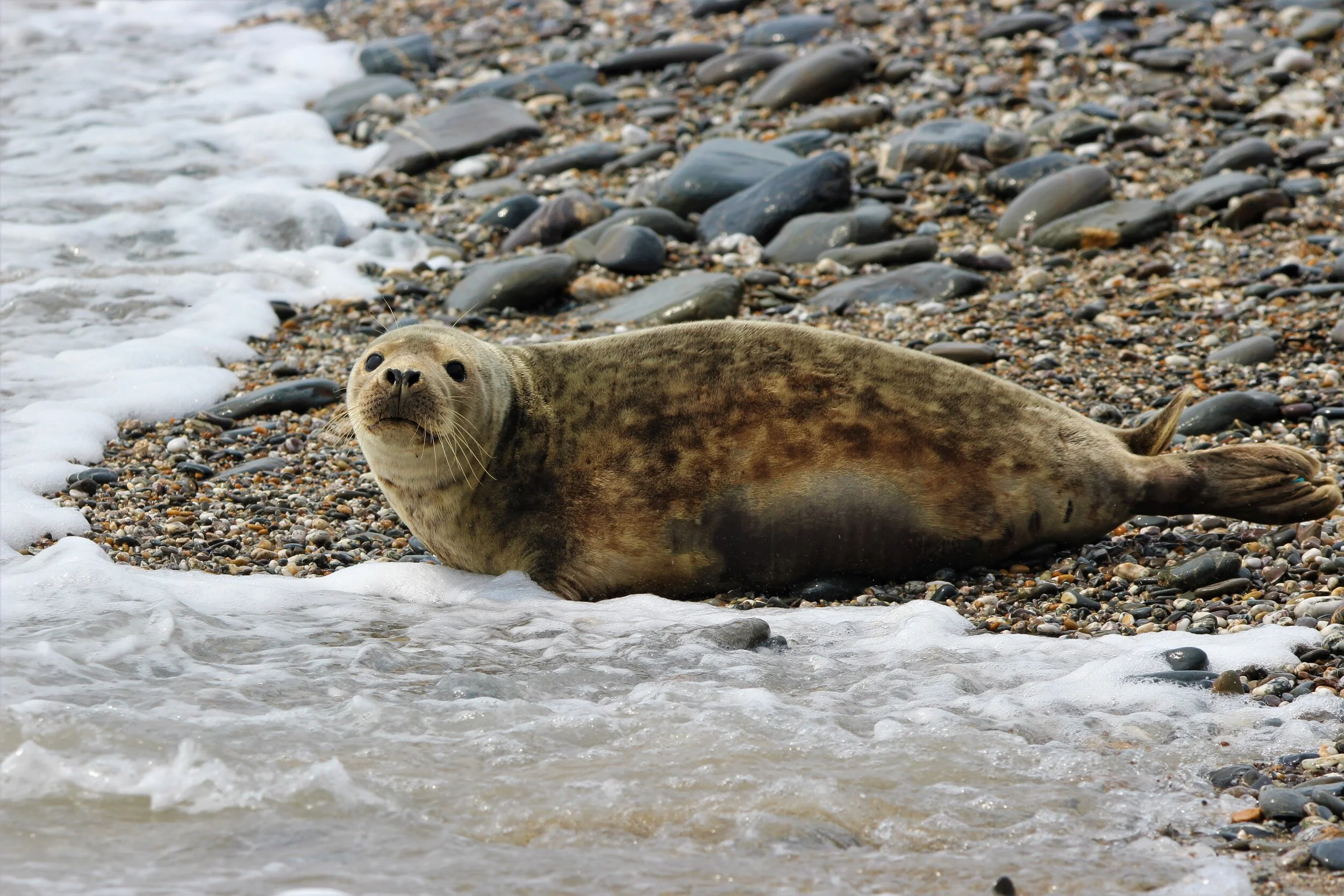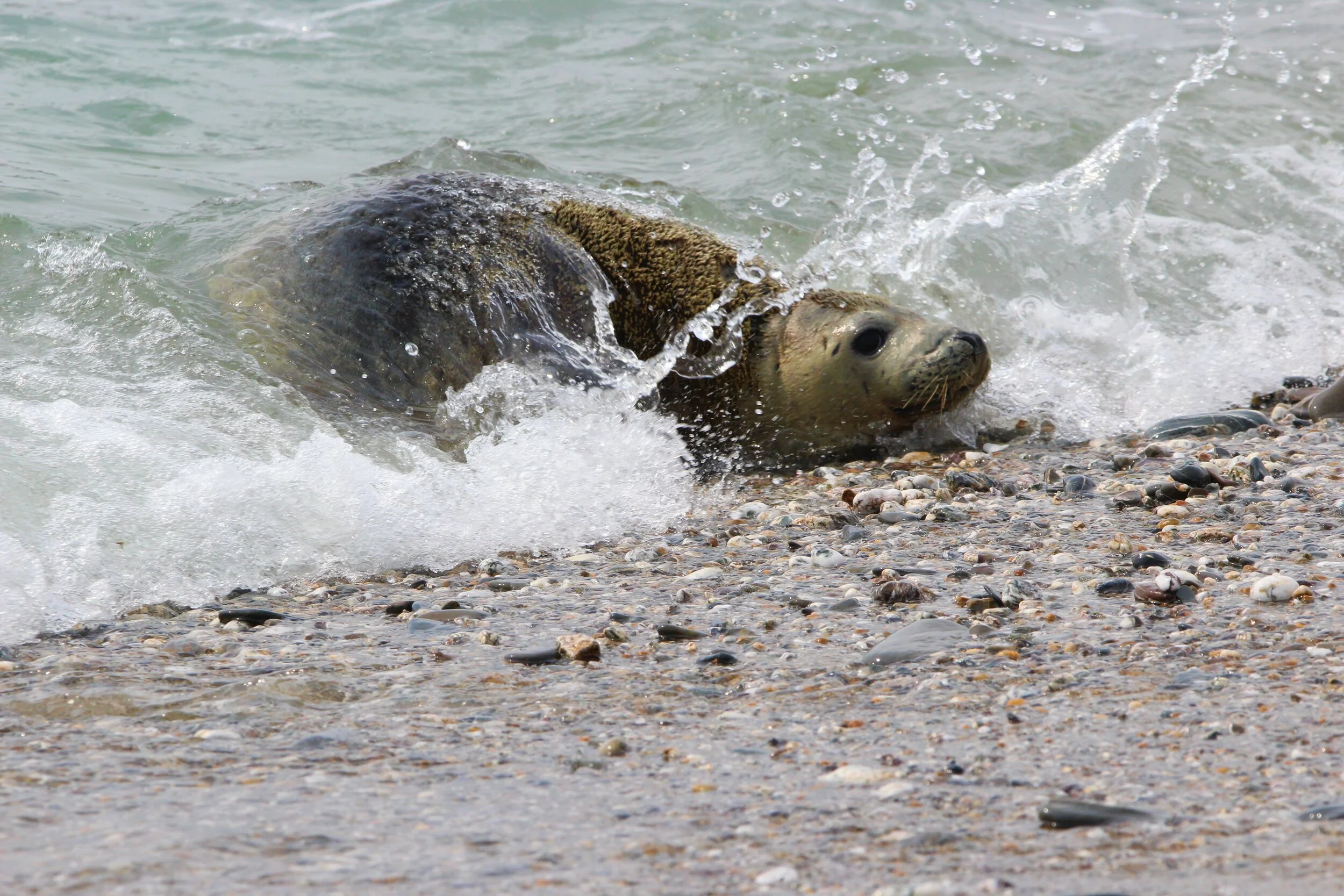Seal Scats & Stats
Daisy Salmon
Daisy Salmon, a researcher and student at the University of Exeter, takes us through the complexities of plastic pollution reaching the top end of the food chain and the implications of this on marine mammals.
My current research is focusing around the question ‘are wild Grey Seals (Halichoerus grypus) eating plastic?’ and ‘what are the potential health effects from this?’.
Research by Sarah Nelms at the University of Plymouth has shown that captive seals are in fact ingesting plastic when fed with Atlantic caught wild mackerel (Scomber scombrus), as plastic particles were found in both the intestines of the mackerel and the scats (poo) of the seals.
Photo: Daisy Salmon @daisy_salmon_photography
However, whether wild Grey Seals are ingesting plastic is, so far, unknown. This is where I come in.
I am currently analysing Grey Seal scats for evidence of plastic particles. If I do indeed find plastic particles, this could lead to a greater understanding of the local trophic transfer of toxins (passing harmful chemicals through the food chain). This could encourage further conservation measures for Grey Seals and, hopefully, the reduction of plastic use by compassionate individuals.
‘But is plastic pollution really that bad for marine life?’ I hear you ask. Yes. Yes, it is. So put down your plastic straws and listen to this:
Scientists all around the globe have been researching the effects of plastic injection by marine life for many years and have concluded some scary facts.
There are three main health issues that plastics cause when they are ingested: the absorption of toxins into the body, starvation, and bioaccumulation. In many cases, these issues can lead to the death of the organism in question.
Marine plastics act like a sponge for toxins. When organisms ingest marine plastics, it can cause the blockage or over-excretion of gastric enzymes (the body produces these to help break down food, although too much can be lethal), decreased feeding activity, a decrease in steroid (growth) hormone production, delays in ovulation, teratogenic effects (affecting the growth of foetuses), an increased risk of catching diseases, and death.
Photo: Daisy Salmon @daisy_salmon_photography
In addition to this, health issues such as liver toxicity, reproductive issues, changes in behaviour and the formation of cancers can be caused by PCBs (polychlorinated biphenyls) and PAHs (polycyclic aromatic hydrocarbons) that are found in marine plastics. Studying the real-life effects of these toxins is very difficult as their effects differ drastically depending on the species that have ingested them, their concentration, the number of plastic particles eaten, and how long these plastics have been inside the body for.
Aside from being highly toxic to marine life, the plastics themselves can also cause starvation, as once an organism has ingested plastic, depending on the size, it cannot be excreted. This leads to a higher and higher percentage of plastics building in the organisms’ stomach until they can no longer eat, and so die of starvation.
Even species as small as plankton have been negatively affected by plastics. Research has shown that microplastics can decrease the level of food copepods (a type of zooplankton) can eat, which has then resulted in a decreased level of energy and can even stop them from reproducing. The consumption of microplastics by plankton has led to bioaccumulation in the food chain, as the microplastics are passed from prey to predator. Research has shown that many shellfish and small filter feeders that eat plankton are consequently consuming microplastics. Shellfish like mussels and oysters that may very well end up on your dinner plate.
Photo: Daisy Salmon @daisy_salmon_photography
This is an issue not only for the predators that consume these shellfish and filter feeders, but for the animals that predate upon those predators. This bioaccumulation of plastics could mean that apex predators (for example, seals) may be ingesting lethal levels of plastic. This could also affect human health, as seafood is a large part of many diets across the globe. The impact of bioaccumulation on humans is unknown. However, toxicological research is approaching plastic consumption as a risk factor for human health. Bon appétit.
On a positive note, you (yes YOU!) can help save marine life by making little changes to your every-day routine: buy a reusable drinks bottle or coffee cup, use a bag-for-life, buy local produce that doesn’t use plastic packaging, get a bamboo toothbrush, and support your local plastic free groups and charities (Surfers Against Sewage, the Marine Conservation Society, Greenpeace). The heart-breaking health effects that OUR pollution is causing marine life CAN be stopped if we ALL make little changes like these.



